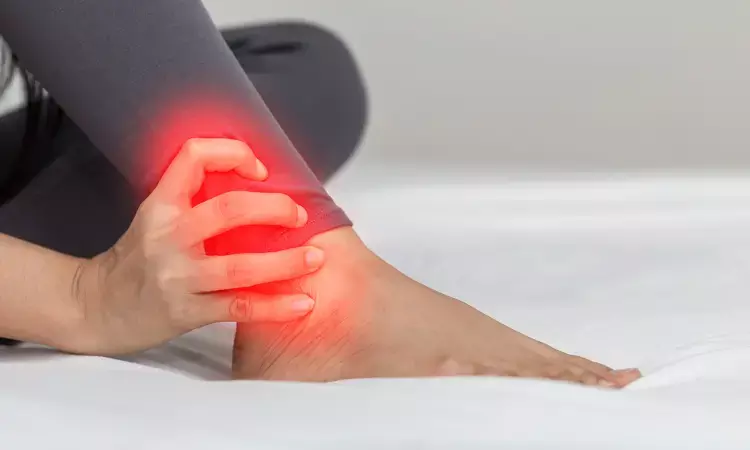- Home
- Medical news & Guidelines
- Anesthesiology
- Cardiology and CTVS
- Critical Care
- Dentistry
- Dermatology
- Diabetes and Endocrinology
- ENT
- Gastroenterology
- Medicine
- Nephrology
- Neurology
- Obstretics-Gynaecology
- Oncology
- Ophthalmology
- Orthopaedics
- Pediatrics-Neonatology
- Psychiatry
- Pulmonology
- Radiology
- Surgery
- Urology
- Laboratory Medicine
- Diet
- Nursing
- Paramedical
- Physiotherapy
- Health news
- Fact Check
- Bone Health Fact Check
- Brain Health Fact Check
- Cancer Related Fact Check
- Child Care Fact Check
- Dental and oral health fact check
- Diabetes and metabolic health fact check
- Diet and Nutrition Fact Check
- Eye and ENT Care Fact Check
- Fitness fact check
- Gut health fact check
- Heart health fact check
- Kidney health fact check
- Medical education fact check
- Men's health fact check
- Respiratory fact check
- Skin and hair care fact check
- Vaccine and Immunization fact check
- Women's health fact check
- AYUSH
- State News
- Andaman and Nicobar Islands
- Andhra Pradesh
- Arunachal Pradesh
- Assam
- Bihar
- Chandigarh
- Chattisgarh
- Dadra and Nagar Haveli
- Daman and Diu
- Delhi
- Goa
- Gujarat
- Haryana
- Himachal Pradesh
- Jammu & Kashmir
- Jharkhand
- Karnataka
- Kerala
- Ladakh
- Lakshadweep
- Madhya Pradesh
- Maharashtra
- Manipur
- Meghalaya
- Mizoram
- Nagaland
- Odisha
- Puducherry
- Punjab
- Rajasthan
- Sikkim
- Tamil Nadu
- Telangana
- Tripura
- Uttar Pradesh
- Uttrakhand
- West Bengal
- Medical Education
- Industry
Individuals with obesity walk with shorter strides and have potential risk of falling: Study

Obesity is a major public health concern, as it is known to increase the risk of dependency and limit mobility in adults. Further over the past decade, obesity rates have skyrocketed worldwide.
Excess body weight is known to affect gait, but the influence of body fat distribution on gait parameters and neuromuscular adaptations remains unclear. A recent multicenter study sought to explore this relationship, shedding light on how body mass distribution influences walking patterns and ankle muscle coactivation in obese individuals.
Previous research has shown a link between obesity and altered gait patterns, but the role of body fat distribution in this relationship has not been extensively studied. This study was published in PLoS One journal by Wael M. and colleagues.
The objective of the study was to investigate the impact of body fat distribution on gait parameters and ankle muscle coactivation in obese individuals. The study included three groups: a non-obese control group, an obese-android group characterized by central fat distribution, and an obese-gynoid group with fat distributed more peripherally.
Participants walked on an instrumented treadmill while their gait parameters and ankle muscle activity were measured. Spatiotemporal parameters, ground reaction forces, and center of pressure velocity were assessed, along with electromyography (EMG) activity of ankle muscles. The key findings of the study were:
• The study found significant differences in gait parameters and ankle muscle coactivation between the obese-android and obese-gynoid groups (p<0.05).
• The obese-gynoid group exhibited shorter strides, lower center of pressure velocity, and different patterns of muscle coactivation during walking compared to the obese-android group (p<0.05).
The findings suggest that body fat distribution plays a significant role in shaping gait mechanics and neuromuscular adaptations in obese individuals. Understanding these differences may help tailor interventions for obesity-related gait abnormalities, potentially leading to more effective rehabilitation strategies.
Reference:
Maktouf, W., Ferhi, H., Boyas, S., Beaune, B., Gaied Chortane, S., Portero, P., & Durand, S. The influence of obesity and fat distribution on ankle muscle coactivation during gait. PloS One,2024;19(3):e0294692. https://doi.org/10.1371/journal.pone.029469
Dr Riya Dave has completed dentistry from Gujarat University in 2022. She is a dentist and accomplished medical and scientific writer known for her commitment to bridging the gap between clinical expertise and accessible healthcare information. She has been actively involved in writing blogs related to health and wellness.
Dr Kamal Kant Kohli-MBBS, DTCD- a chest specialist with more than 30 years of practice and a flair for writing clinical articles, Dr Kamal Kant Kohli joined Medical Dialogues as a Chief Editor of Medical News. Besides writing articles, as an editor, he proofreads and verifies all the medical content published on Medical Dialogues including those coming from journals, studies,medical conferences,guidelines etc. Email: drkohli@medicaldialogues.in. Contact no. 011-43720751


